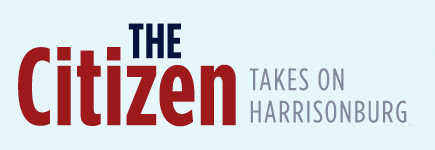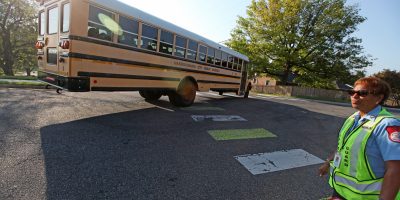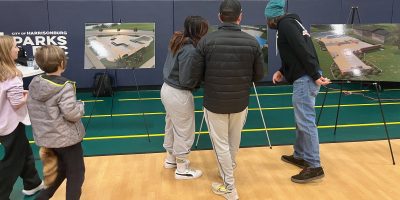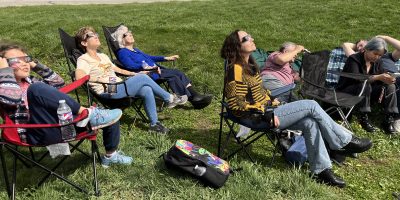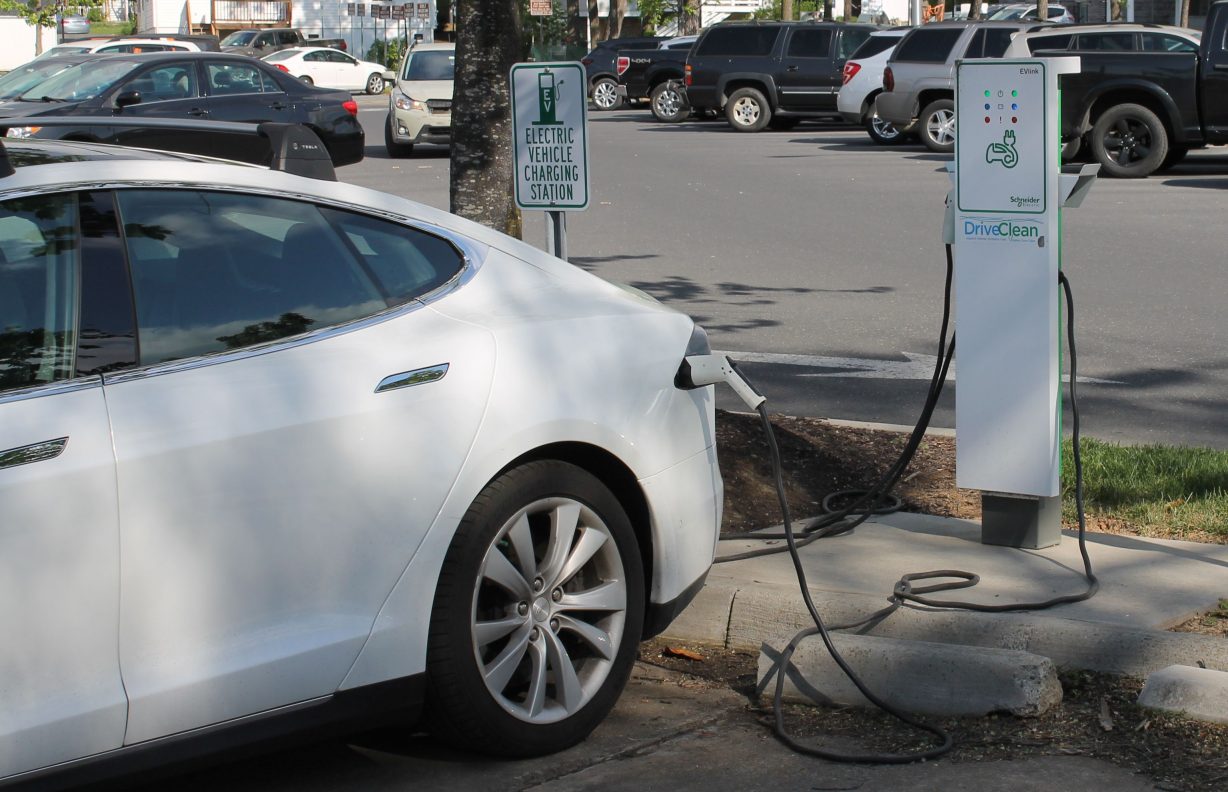
By Eric Gorton, contributor
Michael Alexiou said he would love to see combustion engines become relics of the past.
A driver of an electric vehicle since 2014, the Harrisonburg resident is not among those drivers who have had to wait in line for gas this week in the midst of the Colonial Pipeline crisis.
However, much work needs to be done to build the charging network EVs require.
Some of that work is happening.
Among recent advancements, Dominion Energy joined an initiative in March with five other utilities to create a network of charging stations for electric vehicles across major highway systems in the Midwest and southeastern U.S.
In April, the White House announced progress on the Biden administration’s goal to accelerate and deploy electric vehicles and charging stations.
Also in April, the U.S. Department of Transportation announced that Interstates 81 and 95 through Virginia have been designated EV signage ready, meaning the longest distance between charging stations is 50 miles.
But it’s not being built fast enough, said Alleyn Harned, executive director of Virginia Clean Cities, a nonprofit sponsored by the U.S. Department of Energy to promote alternative fuel use in the transportation sector.
Harned said in an email interview that he believes the sluggish pace of infrastructure construction in the U.S. is curtailing demand for EVs, even though GM has announced it will produce only EVs by 2035 and research at the University of California, Berkeley says rapid advances in EV technology and the cost of batteries could allow for all new cars and trucks sold in the U.S. to be powered by electricity that year.
Infrastructure buildout should be two years ahead of demand — and not just along major arteries, Harned said. Considerable planning and implementation should be taking place in neighborhoods, too, he added.
Earlier this year, Harrisonburg resident Jeff Heie asked the Harrisonburg Electric Commission to work with Harrisonburg officials to plan for and place chargers in residential neighborhoods.

“I feel like I have hit a dead end with the city,” said Heie, who owns an electric vehicle but does not have a place to charge it at his home. Lacking a driveway and having to park in the street, Heie said he would have to run an extension cord from his house and across a sidewalk. And because he does not have access to anything more powerful than a standard 120-volt outlet, charging his car at home could take close to 24 hours when the battery is empty.
The city isn’t ready to unveil its next steps.
“It’s too early to go into any detail,” Harrisonburg’s spokesman Michael Parks said in an email in response to questions about developing EV charging infrastructure. “We have a committee working with staff on our Environmental Action Plan, but nothing is definitive yet with what the results will be.”
Unable to charge his car at home, Heie charges his vehicle at HEC’s main office at the corner of Bruce and South Liberty streets or at the Harrisonburg-Rockingham Democratic Headquarters on West Market Street. Those locations have Level 2 chargers that can replenish an empty battery in six to eight hours.
Brian O’Dell, executive director of HEC, said HEC’s chargers are used every day, “often three cars at a time with others waiting.”
“I can do it for free, no complaint about that, but I don’t feel like I should get free electricity,” Heie said. It’s also less convenient than it would be to plug the car in at home.
In his neighborhood, Heie said chargers could be placed in the public right-of-way between the sidewalk and the street. When he asked if the city was considering adding chargers in neighborhoods like his, he was told the city is looking into placing chargers in public areas downtown, not in residential areas.
“That may be helpful for people who work downtown to charge their vehicle while at work. It’s not particularly helpful for people like me who are not permitted to put in a charger at home, mostly because I don’t have a place to park our vehicle off the street,” he said.
As EVs become more common, Harned said most charging will take place at people’s homes, which is a challenge for residents of apartment buildings and neighborhoods that lack convenient access to electrical outlets.
“This is primarily a thing where if the homeowner does it, it is OK, but if the homeowner asks about it, they get stuck in a system that prohibits them from moving forward,” Harned said. “Some localities have passed ordinances enabling the use of charging but requiring some significant barriers to access.”
On a webpage with information for charging at home, the U.S. Department of Energy says EV charging stations for multi-unit dwellings, such as condos or apartments, provide owners with a way to help attract and retain residents and foster an environmentally sustainable community.
However, it cautions that building owners and EV drivers face unique considerations when installing charging stations, ranging from parking and electrical service access to billing and legal concerns. It recommends the California Plug-in Electric Vehicle Collaborative’s Guide for Residents of Multi-Unit Dwellings as a resource.

Harned said Berkeley, California, has set a good example for building EV charging capacity in residential areas. The city ran a residential curbside electric vehicle charging pilot program from 2014-2020 that provided regulations for people who park on streets to purchase and install EV chargers.
In July 2020, the Berkeley City Council adopted the city’s first Electric Mobility Roadmap, which “identifies goals strategies, and actions to create a fossil fuel-free transportation system that integrates with and supports the City’s ongoing efforts to increase walking, biking, and public transportation, and ensures equitable access to the benefits of clean transportation.”
Heie said Harrisonburg “has the opportunity to make a statement that, ‘we’re thinking about the future and we’re wanting to encourage people to drive electric vehicles because they are better for the environment.’”
While he said his situation is unusual, noting that most people who own EVs now have off-street parking, he said eliminating barriers to electric vehicle adoption is in the city’s best interest since HEC will provide the electricity.
Harned agreed.
“Unless Harrisonburg intends to install 40,000 retail EV chargers, the city should understand the new opportunity of these technologies and should find methods to allow individual consumers to charge basically everywhere that a vehicle is currently parked.”
The top EV-Friendly cities/regions in Virginia, according to PlugShare.com are Virginia Beach-Norfolk-Newport News with 395 charging locations, Richmond with 305, the Charlottesville area with 97 and the Roanoke area with 60. It lists 35 stations in Harrisonburg and Rockingham County.
“I’m a little frustrated but I’m trying to hold back that frustration,” Heie said. “Maybe HEC is the government body that encourages this among the other city departments because it’s going to be a business maker, it’s going to increase HEC’s business of selling electricity.”
O’Dell said HEC will work with other city departments on plans for expanding infrastructure in Harrisonburg, but what role HEC has in that process has not been determined.
Journalism is changing, and that’s why The Citizen is here. We’re independent. We’re local. We pay our contributors, and the money you give goes directly to the reporting. No overhead. No printing costs. Just facts, stories and context. We’re also a proud member of the Virginia Press Association. Thanks for your support.

